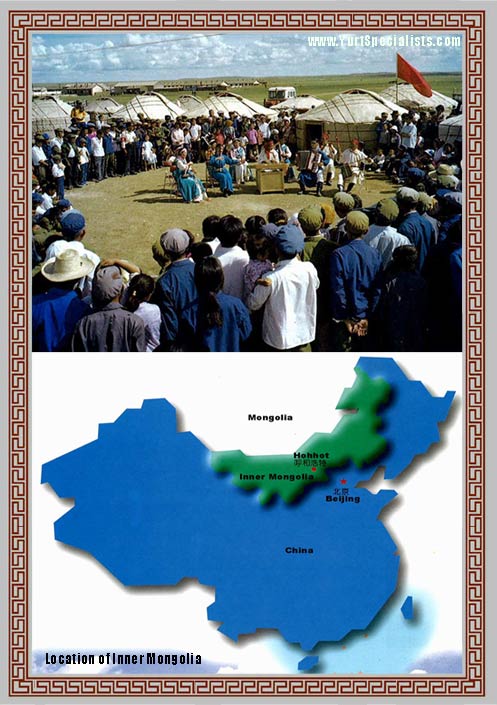Our Yurt History: Tradition Meets Craftsmanship
Yurts (also known as gers) are not just shelters. They are a living heritage of Central Asian nomadic culture. Designed for mobility, harsh climates, and seasonal migration, yurts have evolved over centuries to withstand extreme winds, cold winters, and blazing summers.
Origins and Traditional Construction
For generations, nomadic peoples across the steppes have built yurts using local materials and ingenious techniques. Key elements include:- Wooden frames, often willow or birch, with latticed walls (khana) and roof poles.
- Felt coverings made from sheep’s wool, providing excellent insulation. The felting process involves wetting fleece, then rolling and compressing it — historically by dragging behind a horse — to produce durable, weather-resistant fabric.
- Portability and ease of assembly; yurts were designed to be built, taken down, and moved quickly.
The Influence of Inner Mongolia
Inner Mongolia, an autonomous region in northern China, thrives in a vast grassland environment with dramatic seasonal variations. It has a long history of nomadic culture, where many of the traditional building methods we use today originate. Techniques for weatherproofing, structural joinery, and material choice come directly from this region.Genghis Khan and the Yurt Legacy
Yurts are woven deeply into the lore of the Mongol Empire. According to legend, Genghis Khan’s ger could be moved via huge wheeled carts pulled by many oxen. Such stories illustrate both the scale and significance of these structures. Today, the cultural identity, craftsmanship, and heritage of those traditions live on through every yurt we craft.Our Approach: Traditional Craft with Modern Adaptability
- Handmade structures in Inner Mongolia by experienced artisans.
- Traditional proportions and joinery, ensuring the structural integrity proven for centuries.
- Modern weatherproofing and finishes, adapted for UK and European climates.
- Custom sizes and uses — from glamping to classrooms, studios, or long-term homes.
Why Choose a Traditionally Made Yurt?
- Designs proven over centuries for durability, insulation, and portability.
- Natural, eco-friendly materials like wood and felt.
- Handcrafted details that reflect living traditions.
- Customisable options in size, coverings, and finishes.
Our Work Across Europe
Our yurts are now part of the landscape in the UK, France, Spain, and even Iceland. Each is crafted for its owner’s needs, considering local climate and lifestyle. Want to see more? Browse our gallery—every yurt tells a story.Ready to Start Your Yurt Project?
Contact us for a free consultation. We’ll guide you through choosing diameter, base options, materials, and finishes so your yurt is not just traditional, but perfectly suited for your site and climate.